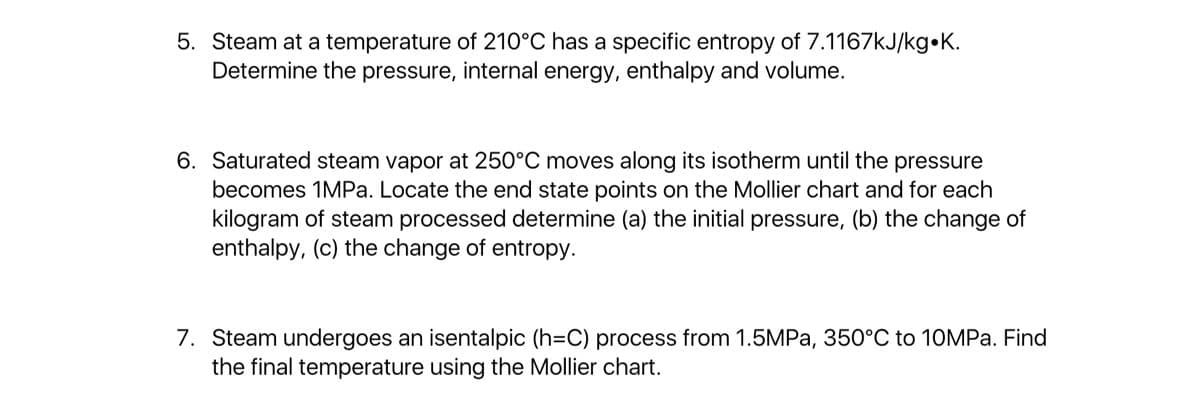a temperature of 210°C has a specific entropy of 7.1167 kJ/kg•K. Determine the pressure, internal energy, enthalpy and volume. Ans. 0.49 MPa, 2877.3 kJ/kg, 2659.7 kJk
Can you answer this? For me i have a lot of difficulty on my subject.
(5) Steam at a temperature of 210°C has a specific entropy of 7.1167 kJ/kg•K. Determine the pressure, internal energy, enthalpy and volume.
Ans. 0.49 MPa, 2877.3 kJ/kg, 2659.7 kJkg, 0.4467 m3/kg
(6) Saturated steam vapor at 250°C moves along its isothern until the pressure becomes 1 MPa. Locate the end state points on the Mollier chart and for each kilogram of steam processed determine (a) the initial pressure, (b) the change of enthalpy, and (c) the change of entropy.
Ans. (a) 4 MPa, (b) 144 kJ/kg, (c) 0.90 kJ/kg•K
(7) Steam undergoes an isentalpic (h = C) process from 1.5 Mpa, 350°C to 10 MPa. Find the final temperature using the Mollier chart.
Ans. 418°C

Trending now
This is a popular solution!
Step by step
Solved in 2 steps
